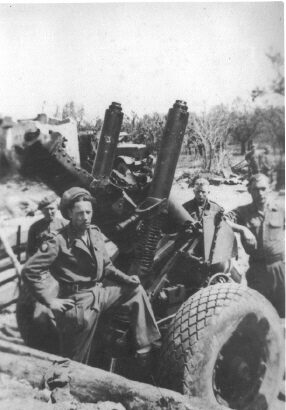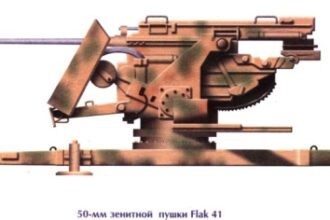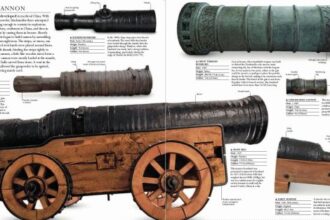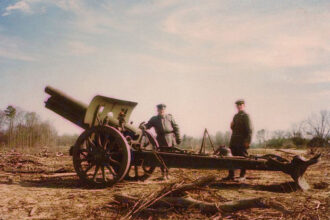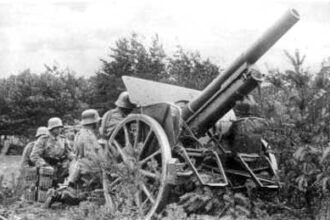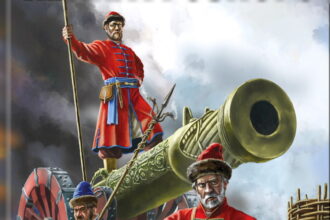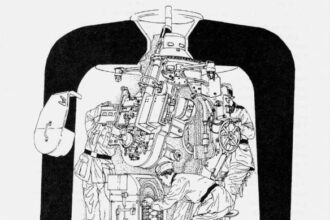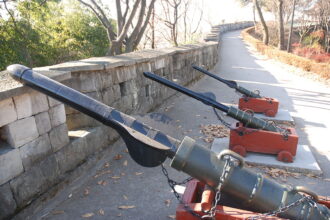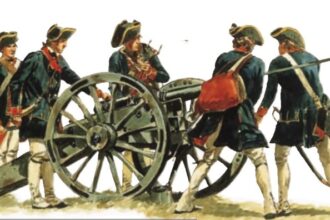Newsletter
Get the latest from Weapons and Warfare right to your inbox.
Follow Us
Explore
Artillery
2nd Artillery Group, 2nd Polish Corps
Poles of the 2nd Artillery Group, 2nd Polish Corps, man a heavy artillery piece bombarding German positions. No one was keener to liberate their homeland than the Poles. 2nd Artillery Group: 9th,10th,11th,12th and 13th heavy artillery regiments (pulk artylerii ciezkiej) General Wladislaw Sikorski, the head of the Polish Government in London, entered into negotiations with Soviet Government to free Poles…
Most Recent
WWI German Artillery I
15cm. schwere Feld Haubitze (s.F.H.) 1913 Ever since its significant contribution to the German victory against France in the Franco-Prussian War in 1871, the artillery had enjoyed a particularly prestigious position within the army. From 1914, artillery units were employed extensively to support all operations, while technological advances meant that…
WWI German Artillery II
10.5cm leFH16 howitzer. FOOT ARTILLERY REGIMENTS AND BATTERIES The foot artillery contained a diverse range of heavy artillery, howitzers (leichte Feldhaubitzen and schwere Feldhaubitzen), mortars, and special-purpose weapons (such as siege guns and railway guns), which from 1914 regularly bombarded the Allies’ defensive positions, troop concentrations, artillery batteries, headquarters and…
Russian Artillery of the 16th Century
The Czar Cannon Also known as the Great Mortar of Moscow, the Czar Cannon was cast of bronze in 1586 and was the last and the largest of the bombards. Cast by master metalworker Andrei Chokov for Czar Fyodor I (b. 1557; r. 1584-1598), son of Ivan the Terrible (b.…
M19 5cm Maschinengranatwerfer
Diagram of German M19 5cm automatic mortar as sited in the Channel Islands and at points on the Atlantic Wall. Rheinmettall-Borsig produced ten studies into developing a complete system for an automatic mortar before making a final choice which would become the M19 5cm Maschinengranatwerfer. The operational role of the…
Korean naval bolt-firing cannons (Chongtong)
The first one is a chija-ch’ongt’ong which was the second largest of the cannons that appeared in the mid-1500s. The second was a pyorhwangja which was a swivel gun variant of the smallest cannon, the hwangja, which appeared during the Imjin War or shortly after. The third was a hyonja…
The American War of Independence – Artillery
Rebel Gun Crew: A well-trained crew could swiftly load, aim, and fire; these artillerymen swab their gun’s hot muzzle with a damp sponge to eliminate sparks before reloading. Displayed at Saratoga, background, an English howitzer; foreground, a 6-pounder. Note the ammunition boxes mounted on each side of the gun –…
Most Popular
Artillery of the Middle Ages
The earliest written evidence for the cannon is found in the ordinances of Florence for…
IMPERIAL RUSSIAN ARMY – RUSSO–JAPANESE WAR
On the eve of the Russo–Japanese War, Russian land forces were the biggest in the…
5 cm FlaK 41 & 5.5 cm Gerät 58
The 5-cm (1.97-in) Flak 41 was one of the least successful ofall the German anti-aircraft…
American Civil War Rail-Weapons
From the very beginning of the war, the employment of railway batteries in the form…
